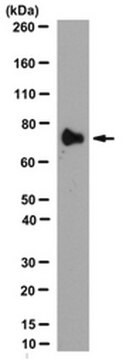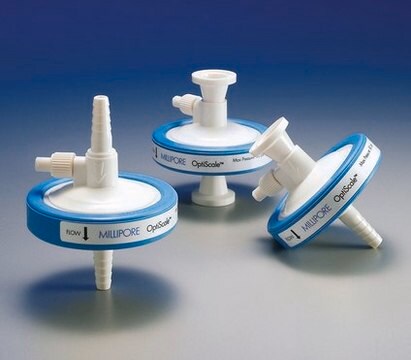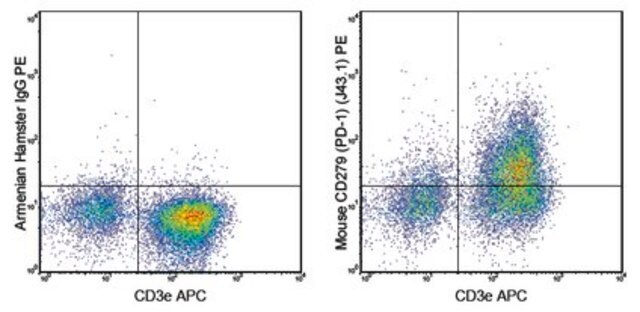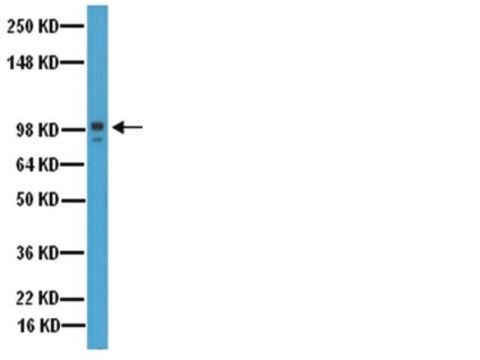MABS1281
Anti-Itk Antibody, clone 2F12
clone 2F12, from mouse
Sinónimos:
Tyrosine-protein kinase ITK/TSK, IL-2-inducible T-cell kinase, Interleukin-2-inducible T-cell kinase, Kinase EMT, T-cell-specific kinase, Tyrosine-protein kinase Lyk
About This Item
WB
western blot: suitable
Productos recomendados
origen biológico
mouse
Nivel de calidad
forma del anticuerpo
purified immunoglobulin
tipo de anticuerpo
primary antibodies
clon
2F12, monoclonal
reactividad de especies
human
reactividad de especies (predicha por homología)
mouse (based on 100% sequence homology), rat (based on 100% sequence homology)
técnicas
immunoprecipitation (IP): suitable
western blot: suitable
isotipo
IgG1κ
Nº de acceso NCBI
Nº de acceso UniProt
Condiciones de envío
ambient
modificación del objetivo postraduccional
unmodified
Información sobre el gen
human ... ITK(3702)
Descripción general
Especificidad
Inmunógeno
Aplicación
Signaling
Immunoprecipitation Analysis: A representative lot immunoprecipitated Itk from both parental and Lck-negative (J.CaM1) Jurkat cells. Itk immunoprecipitated from the parental Jurkat cells was found with increased tyrosine phosphorylation following TCR cross-linking or pervanadate treatment, while only very weak tyrosine phosphorylation was seen with Itk from J.CaM1 upon prolonged pervanadate treatment (Heyeck, S.D., et al. (1997). J. Biol. Chem. 272(40):25401-25408).
Immunoprecipitation Analysis: A representative lot immunoprecipitated tyrosine-phosphorylated Itk from Jurkat cells stimulated by cross-linking of endogenous cell surface CD3 or transfected CD8 extracellular domain/CD28 cytoplasmic domain chimera (Heyeck, S.D., et al. (1997). J. Biol. Chem. 272(40):25401-25408).
Western Blotting Analysis: A representative lot detected baculovirus expressed Itk from infected Sf9 insect cells following ltk immunoprecipitation by the same antibody. The overexpressed ltk was found autophosphorylated on tyrosine when expressed alone in Sf9 and increased ltk tyrosine phosphorylation was seen when co-expressed with Lck (Heyeck, S.D., et al. (1997). J. Biol. Chem. 272(40):25401-25408).
Calidad
Western Blotting Analysis: A 1:1,000 dilution of this antibody detected Itk in 10 µg of Jurkat cell lysate.
Descripción de destino
Forma física
Almacenamiento y estabilidad
Otras notas
Cláusula de descargo de responsabilidad
¿No encuentra el producto adecuado?
Pruebe nuestro Herramienta de selección de productos.
Código de clase de almacenamiento
12 - Non Combustible Liquids
Clase de riesgo para el agua (WGK)
WGK 1
Punto de inflamabilidad (°F)
Not applicable
Punto de inflamabilidad (°C)
Not applicable
Certificados de análisis (COA)
Busque Certificados de análisis (COA) introduciendo el número de lote del producto. Los números de lote se encuentran en la etiqueta del producto después de las palabras «Lot» o «Batch»
¿Ya tiene este producto?
Encuentre la documentación para los productos que ha comprado recientemente en la Biblioteca de documentos.
Nuestro equipo de científicos tiene experiencia en todas las áreas de investigación: Ciencias de la vida, Ciencia de los materiales, Síntesis química, Cromatografía, Analítica y muchas otras.
Póngase en contacto con el Servicio técnico





